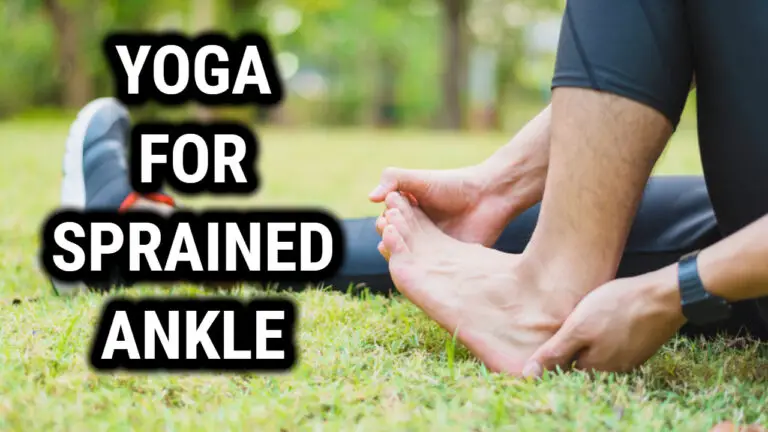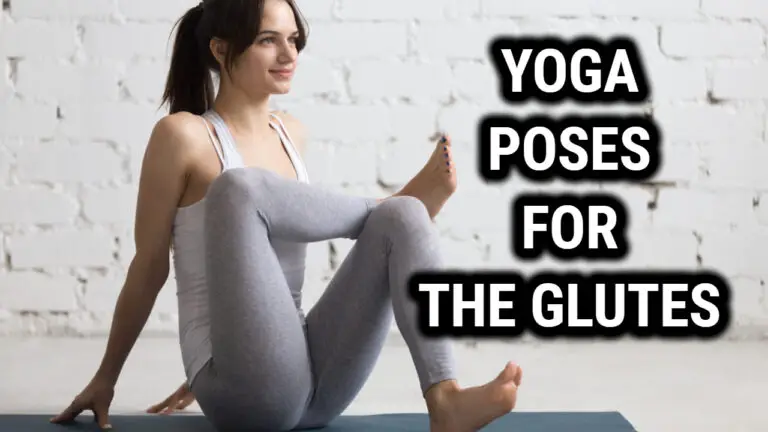Is Yoga Asanas Good for Curing Vertigo – Yoga for Vertigo

Yoga may help reduce the intensity of vertigo attacks, improve balance and calm the nervous system. It also provides an opportunity for people to take control of their lives and learn how to manage their symptoms in a safe environment.
Studies have found that yoga can be an effective way to reduce vertigo symptoms and improve quality of life.
What Is Vertigo?

Vertigo is a symptom of an underlying condition that affects the nervous system and sense of balance. According to the National Institute of Neurological Disorders and Stroke, over 40 million Americans suffer from severe vertigo each year.
This can cause dizziness, nausea, difficulty walking or standing, blurred vision, damage to the skull and lightheadedness.
Most people associate vertigo with sensation of spinning. While this is one of the more common symptoms, it’s not the only one. Other vertigo symptoms include feeling as if you are tilting or swaying even when standing still, unsteadiness when walking, a sensation that objects around you are moving even though they’re not, and headaches.
The cause of vertigo can vary from person to person. It could be due to an inner ear problem or something more serious such as a stroke or brain tumor. To determine what is causing your vertigo symptoms, it’s important to see a doctor who can perform diagnostic tests to identify the underlying issue.
From there, treatment options can be discussed which may include medications or lifestyle changes like yoga or physical therapy. Understanding the potential causes of vertigo is key to finding the right treatment plan for you.
Symptoms of vertigo
- Dizziness
- Lightheadedness
- Feeling like you or the room is spinning or moving
- Unsteadiness or loss of balance
- Nausea
- Vomiting
- Headache
- Sweating
- Blurred vision
- Hearing loss or ringing in the ears
- Difficulty concentrating
Causes Of Vertigo

Vertigo can have a number of underlying causes, ranging from inner ear problems to more serious conditions such as stroke or brain tumors. Let’s take a closer look at some of the potential causes of vertigo.
Inner ear issues, head injury, surgery, multiple sclerosis, and migraine headaches may all cause vertigo, a feeling of dizziness and spinning. This is due to disruption of equilibrium in the brain or damage to the semicircular canals of the ear.
Finally, diseases affecting the cardiovascular system like high blood pressure or high cholesterol may also be contributing factors for some cases of vertigo. It is important to note that these conditions often require medical treatment in order to manage symptoms and reduce risk factors for further complications.
Taking all this into account, it’s clear that there are many potential causes of vertigo that need to be considered when seeking treatment options.
The Role Of Yoga In Treating Vertigo
Yoga can be a great way to help those suffering from vertigo. It’s important to note that yoga is not a cure for vertigo, but it can be an effective way to manage the symptoms and improve overall balance. There are specific yoga asanas, or poses, designed specifically for treating vertigo.
These poses focus on gentle stretching and strengthening of the neck muscles, as well as opening up the chest and stimulating the nervous system. Additionally, these poses help to stimulate circulation in the head and neck area which can help reduce dizziness and light-headedness associated with vertigo.
The practice of yoga also helps to activate and strengthen your body’s balance system. This is achieved through various postures, breathing exercises, and meditation techniques that help you become more aware of your body’s position in space.
With regular practice, this awareness can lead to improved coordination, balance, and stability which help in treating vertigo with yoga. Furthermore, practicing yoga has been shown to reduce stress levels which may contribute to reducing episodes of vertigo.
Benefits Of Using Yoga For Vertigo Relief

The benefits of using yoga for vertigo relief are many.
Firstly, the practice helps to increase blood circulation in the neck and improve blood flow in the head area, which can reduce dizziness.
Secondly, doing yoga asanas to treat vertigo which can help improve balance and coordination, enabling practitioners to move more confidently with reduced fear of falling or feeling unsteady.
Thirdly, incorporating breathing exercises into a regular practice can help bring down stress levels associated with vertigo episodes.
Yoga helps treat vertigo is an effective way it not only manages symptoms associated with this condition but also to improve overall well-being. With regular practice, practitioners will notice increased stability and improved posture as well as improved concentration and focus.
Yoga for vertigo provides a holistic approach to managing this condition by calming both the body and mind in one single exercise.
By applying these principles of yoga to treat vertigo, practitioners will be able to find relief from their symptoms while also improving their physical and mental health overall.
Now that we have discussed the benefits of using yoga for vertigo relief, let’s take a look at some specific types of asanas and pranayamas that can be used to treat this condition.
Different Types Of Yoga Asanas And Pranayamas To Treat Vertigo
Having discussed the various benefits of using yoga for vertigo relief, let’s look at some specific yoga asanas and pranayamas to help treat this condition. Yoga pose (asana) that are considered beneficial in treating vertigo include
- Mountain Pose (Tadasana),
- Cat-Cow Pose (Marjariasana),
- Child’s Pose (Balasana)
- Corpse Pose (Shavasana).
- Adho Mukha Svanasana (Downward Facing Dog Pose)
- Vrikshasana (Tree Pose)
These yoga postures can help improve balance, coordination, posture and circulation in the neck and head area.
In addition, certain breathing exercises (Pranayama) such as
- Alternate Nostril Breathing (Nadi Shodhana)
- Ujjayi Breath
- Bhramari
- Reciting OM with closed eyes
can be used to reduce dizziness associated with vertigo.
Taking time out from a busy schedule to focus on calming the mind through mindful movement and breathwork can significantly reduce stress levels which are often associated with episodes of vertigo.
The relaxation response that is activated through yoga practice also helps to calm the nervous system, enabling practitioners to find a sense of peace and ease from their symptoms.
By incorporating these types of asanas into a regular practice, many have cured vertigo and many others have noticed improved overall well-being as well as reduced episodes of dizziness associated with their vertigo condition. As we move forward, let us now take a look at how mudras can be used to further balance the nervous system.
Mudras For Balancing The Nervous System
Practicing mudras, which are traditional hand gestures used in yoga to balance and regulate the nervous system. Mudras can be used to open up energy pathways in the body, allowing energy to flow more freely and helping to reduce dizziness associated with vertigo.
The most commonly used mudras for vertigo include Gyan Mudra, Prithvi Mudra, Apana Vayu Mudra and Adi Mudra. Each of these mudras has specific benefits for balancing the nervous system and reducing dizziness caused by vertigo.
For example, Gyan Mudra helps to stimulate the brain centers responsible for balance and coordination and helps you come to a meditative state while Prithvi Mudra encourages an overall sense of calmness and makes you relaxed.
Similarly, Apana Vayu Mudra helps to improve circulation in the neck area while Adi Mudra helps restore equilibrium in the body’s energy field.
By practicing these mudras regularly, practitioners can experience improved balance, coordination and posture as well as reduced episodes of being dizzy associated with their vertigo condition.
Taking time out from a busy schedule to focus on calming the mind through mindful movements combined with breathing exercises can significantly reduce stress levels which are often associated with episodes of vertigo.
Also Read: Is Yoga Good For Spondylolisthesis – Best Yoga Therapy for Spondylolisthesis
Other Lifestyle Changes For Dealing With Vertigo
Incorporating activities such as yoga, tai chi and meditation into daily life can help calm the mind and reduce stress levels which can often aggravate vertigo episodes.
Regular gentle physical exercises like walking, swimming or cycling also provide beneficial results as they help improve circulation of blood around the body while providing additional balance support. Additionally, regular consumption of healthy foods rich in vitamins and minerals can provide essential nutrients to nourish the body and keep it healthy.
Additionally, limiting alcohol consumption, avoiding caffeine and nicotine as well as reducing stress levels by engaging in relaxation activities such as listening to music or reading a book are all beneficial lifestyle changes that may help reduce symptoms associated with vertigo.
Frequently Asked Questions
How Long Does It Take To See Results From Using Yoga For Vertigo Relief?
When it comes to vertigo relief, yoga can be particularly helpful. Regular practice can help reduce symptoms by improving circulation and balance. There are also several poses specifically designed to target dizziness and nausea associated with vertigo. While the results vary from person to person, many people have reported seeing positive changes within a few weeks of starting their practice.
If you’re looking to use yoga for vertigo relief, the key is consistency. Try to make time for at least three sessions per week and focus on poses that are designed to address your specific needs. Even if you don’t notice any immediate improvements, keep up with your practice- the long-term benefits are worth it!
TIP: Don’t be afraid to ask for help! If you’re new to yoga or have any special needs related to vertigo, consider finding a certified instructor who can guide you through each pose safely and effectively.
Are There Any Risks Associated With Using Yoga To Treat Vertigo?
Yoga is a popular treatment for vertigo, An experienced yoga instructor should be consulted to ensure proper technique and best results. Results may depend on your dedication.
What Type Of Yoga Is Best For Treating Vertigo?
Yoga asana and pranayamas (breathing exercises) are the best type of yoga for treating vertigo. Pranayamas help to increase the oxygen supply to the brain, which can help reduce vertigo symptoms.
Several specific yogasanas, such as Adho Mukha Svanasana (Downward Facing Dog Pose), Vrikshasana (Tree Pose), and Tadasana (Mountain Pose) can help to reduce vertigo symptoms. These poses can help to improve balance and strengthen the back, neck, and abdominal muscles, which can help reduce vertigo symptoms.
Related Read: Does Yoga Truly Enhance Body Balance and Strength?
Conclusion
Yoga is an effective way to manage symptoms of vertigo, providing relief and comfort. It can take a few weeks of regular practice to start seeing results, but with dedication and patience, the benefits will be worth the effort.
With regular practice, yoga can help reduce dizziness and balance issues that are associated with vertigo. It also helps to improve circulation and mental clarity which can further relieve symptoms.
When practicing yoga for vertigo relief there are some important considerations such as warming up before stretching and cooling down after each session. A diet rich in vitamins C, B6, B12 and iron is also recommended as these nutrients play an important role in maintaining healthy nerve cells.
With its calming effects, it is easy to see why yoga is so beneficial for those suffering from vertigo. Imagine yourself feeling energized and calm after each session; this newfound energy can be used to get back out into the world without having to worry about dizziness or balance issues. Yoga provides a safe and natural way to manage vertigo while improving overall health and well-being.





